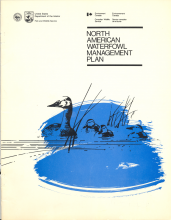Beginning with the first ever North American Waterfowl Management Plan, signed by Secretaries in Canada and the United States, the original NAWMP laid in the foundation of multi-national waterfowl management that is carried on and built upon today.
Timeline
1986
The North American Waterfowl Management Plan is a comprehensive document that needs constant review
and update to remain viable and effectively deal with international problems. In this planning process, there is an
additional need for continuity and coordination to allow wildlife management agencies to initiate short- and long-
term projects that are consistent with the overall Plan.
In view of these needs, a North American Waterfowl Management Plan Committee should be established to
monitor and update the Plan, coordinate current work
1989

With the help of key legislators like Senator George Mitchell of Maine and Representative Silvio Conte of Massachusetts, the North American Wetlands Conservation Act, or NAWCA, was introduced. In 1989, the Senate and House passed NAWCA, and President George H.W. Bush signed this new conservation funding mechanism into law on December 12, 1989. Bush also pledged a new policy of "no net loss of wetlands."
1994
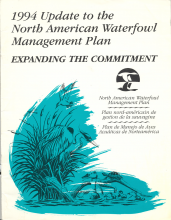
The North American Waterfowl Management Plan, signed in 1986, recognizes that the recovery and perpetuation
of waterfowl populations depends on restoring wetlands and associated ecosystems throughout the North American
continent. As a result, it established cooperative international efforts to reverse the declines in waterfowl populations and their habitats.
-------
1998
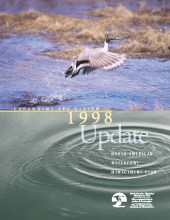
The North American Waterfowl Management Plan (Plan), signed by Canada and the United States in 1986, laid out A Strategy for Cooperation in the conservation of waterfowl. It emphasized the importance of a partnership approach to conserve habitats important to waterfowl, to continually improve our scientific understanding of waterfowl populations and their interactions with habitats, and to periodically update the Plan.
2004
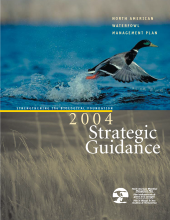
The North American Waterfowl Management Plan (Plan) was originally written in 1986 and envisioned a 15-year effort to achieve landscape conditions that could sustain waterfowl populations. The Plan Committee (representatives from Canada, the United States, and Mexico) has made two previous modifications to the 1986 Plan to account for biological, sociological, and economic changes that influence the status of waterfowl and the conduct of cooperative habitat conservation.
2007
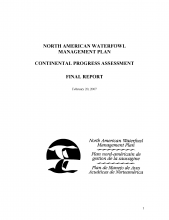
In 2005, asked by the Plan Committee of the North American Waterfowl Management Plan (NAWMP or Plan), an Assessment Steering Committee (ASC) was formed and conducted the first continental biological assessment of the Plan in its 20 year history. This report summarizes the findings from that effort.
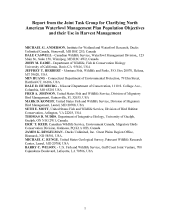
This report addresses one of the most fundamental debates in waterfowl policy and management -- the relative roles of habitat conservation and harvest regulation. The original framers of the North American Waterfowl Management Plan (Plan) recognized the inherent linkages among harvest, habitat, and hunters.
2008
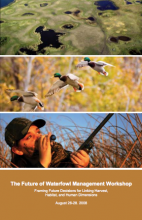
Held in Minneapolis, MN, the workshop (the first of its kind) was an important step in the evolution of waterfowl management in North America. Throughout its history, the waterfowl management community has shown great capacity for innovative thinking and action in the interest of improving waterfowl management according to specific objectives, as witnessed by creation of the Flyway Councils, the North American Waterfowl Management Plan, Adaptive Harvest Management, and the National Duck Hunter Survey.
2012
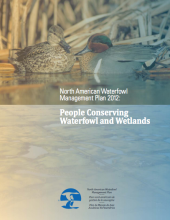
Over its first 25 years, the North American Waterfowl Management Plan (NAWMP) has become a model for international wildlife conservation. In large measure, this is because it has evolved with engagement of the broad waterfowl conservation community. Previous Plan updates – in 1994 (when Mexico became a signatory), 1998 and 2004 – described abundant waterfowl populations as the Plan’s ultimate goal, pursued through large-scale partnership-based habitat conservation.
2014
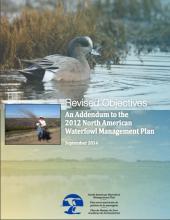
The recommendation outlined in the 2012 Revision of the North American Waterfowl Management Plan (NAWMP or Plan) to “ Develop, revise or reaffirm NAWMP objectives so that all facets of North American waterfowl management share a common benchmark ” presented a timely challenge for the waterfowl management community. Work throughout 2013-14 has led to this document, an addendum to the Plan , which outlines revised objectives for waterfowl populations, waterfowl habitat, and those who enjoy and actively support waterfowl and wetlands conservation.
2017

Held at the National Conservation Training Center in September 2017, the Workshop Approach included:
2018
The 2018 NAWMP Update was signed by the U.S., Canada, and Mexico and officially released January 29, 2019.
===========================================================================================
On behalf of the North American Waterfowl Management Plan Committee (NAWMP PC), we are pleased to announce the availability of the 2018 NAWMP Update.
2020
The America’s Conservation Enhancement Act (ACE Act) was signed into law by President Trump on October 30, 2020 and reauthorizes the North American Wetlands Conservation Act until 2025 and codifies the National Fish Habitat Partnership—two of the most successful conservation efforts in the U.S.

